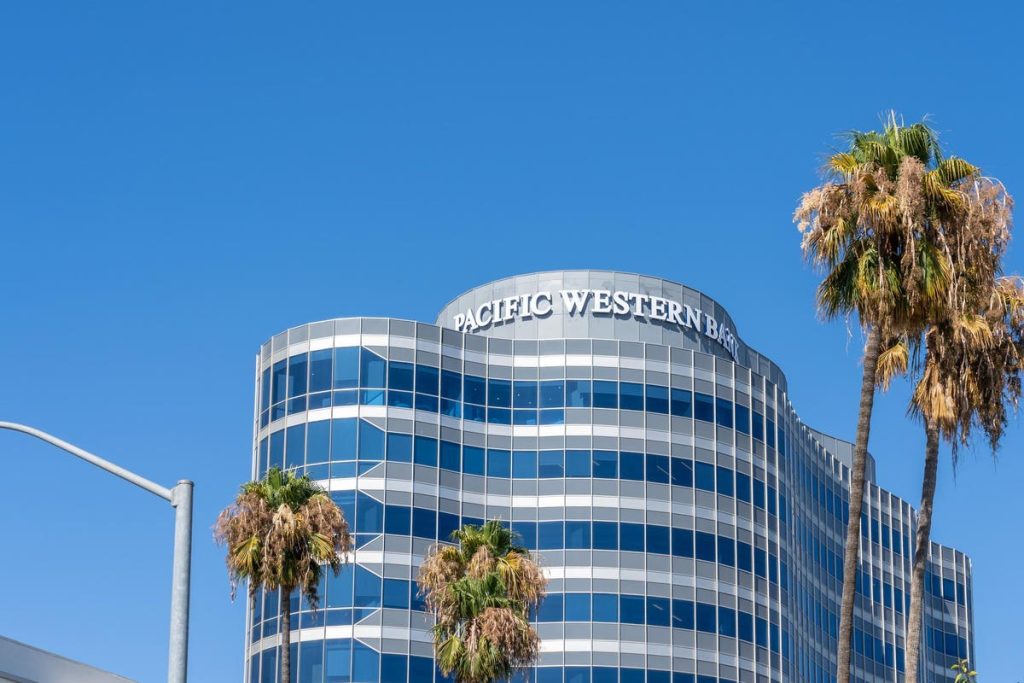The banking turmoil has reached the point where the tide has gone out, and we are seeing which institutions have been swimming naked. A third California-headquartered bank, in less than two months, is looking like it is on the verge of collapse.
As of May 3, PacWest Bancorp’s
PACW
With the Federal Reserve’s tenth interest rate hike in 14 months, PacWest and other regional banks are showing they severely underestimated the impact of high interest rates. And even if the Fed pauses its rate hikes, the recent bank turmoil is now headed to smaller banks than the ones that have failed so far. As I mentioned on Bloomberg Surveillance on Monday, it is far from over.
With $40 billion in assets, PacWest is much smaller than Silicon Valley Bank and First Republic Bank
FRC
First, all three had very significant asset growth in a very brief period of time. PacWest’s assets grew 58% from 2019 to the end of 2022. Similarly, Silicon Valley Bank’s assets grew 64% in the same time period. Rapid asset growth should always be a warning bell for lenders, investors, and regulators that perhaps a bank is letting go of underwriting standards and may not have the necessary personnel or technological systems to measure the risk of those assets.
Second, these banks had very significant increases in deposits in just a couple of years. From 2019 to the end of 2022, PacWest’s deposits rose 77%. Such a significant increase should always make asset liability managers at a bank test whether those deposits are stable. During the first quarter of 2023, PacWest’s deposits declined 15% in comparison to the same quarter in 2022. Other regional banks also experienced declines, because depositors withdrew funds and placed it in money market accounts to take advantage of the higher rate environment. In the case of Silicon Valley Bank and First Republic Bank, depositors also fled out of concern for the safety of their funds.
Thirdly, these three banks are headquartered in California and regulated by the Department of Financial Protection and Innovation and the Federal Reserve Bank of San Francisco. It is fair to request that these regulators conduct a serious post mortem to find out what risks they may have overlooked or why they did not enforce matters requiring attention or matters requiring immediate attention.
Since last fall, I have been writing that the inflationary impact would impact just about every sector of the economy. Unfortunately, by the time the Fed starts to lower rates, perhaps in the latter half of this year, it may be too late for a number of regional and even smaller banks. They do not have the asset and funding diversity enjoyed by globally systemically important banks. And in this environment, those are the banks that have a higher probability of surviving this turmoil.
Other Recent Articles By This Author:
The Federal Reserve’s Interest Rate Increases Create Default Risk In Major Sectors
With First Republic Takeover, JPMorgan Is America’s Most Globally Systemically Important Bank
To Know Why Silicon Valley Bank Failed, Congress Should Ask Former CEO Greg Becker
First Republic Bank’s Earnings Call Did Not Inspire Confidence
First Republic Bank’s Financial Ratios Will Reveal Serious Trouble
Regional Banks’ Financial Results Fail To Impress Investors
What To Watch For With U.S. Regional Banks This Week
Big U.S. Banks Are Preparing For An Impending Recession
Investors Eyes Should Be On Leveraged Finance Markets
Deutsche Bank Should Disclose Its Current Liquidity Levels To Investors
From Ferdinand Marcos To Russian Oligarchs, Troubled Credit Suisse Is A Repeat Offender
How Trump’s Deregulation Sowed the Seeds for Silicon Valley Bank’s Demise
Warning Signals About Silicon Valley Bank Were All Around Us
High Interest Rates Will Continue To Challenge Most Sectors Of The Economy
Leveraged Loan Default Volume In The U.S. Has Tripled This Year
Probability Of Default Is Rising For High Yield Bonds And Leveraged Loans
The U.S. Leveraged Finance Market Is At A Record $3 Trillion
Read the full article here
